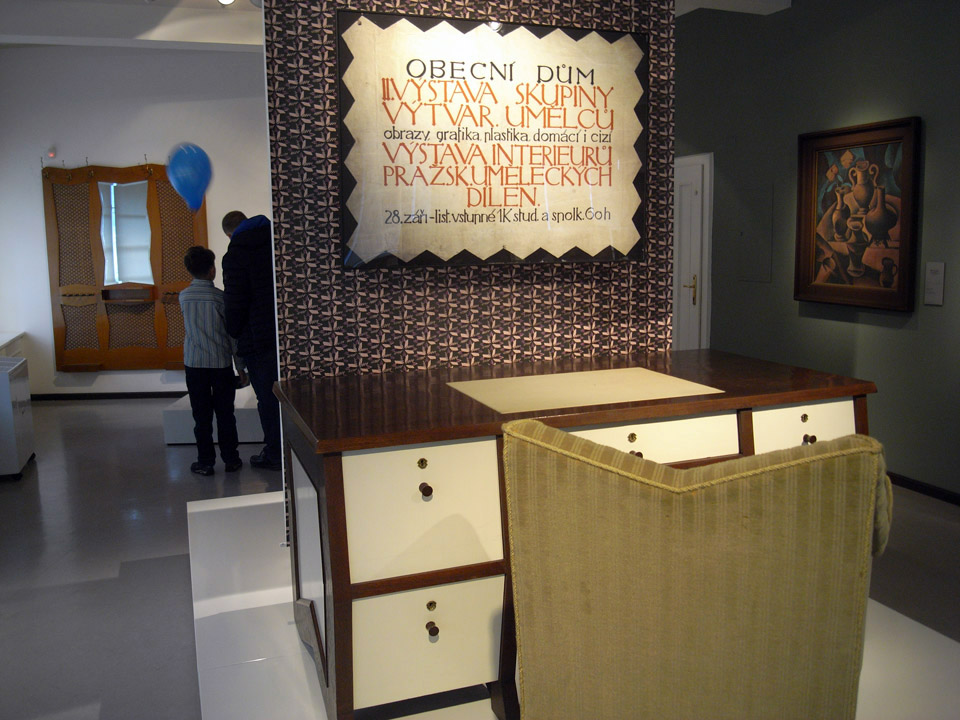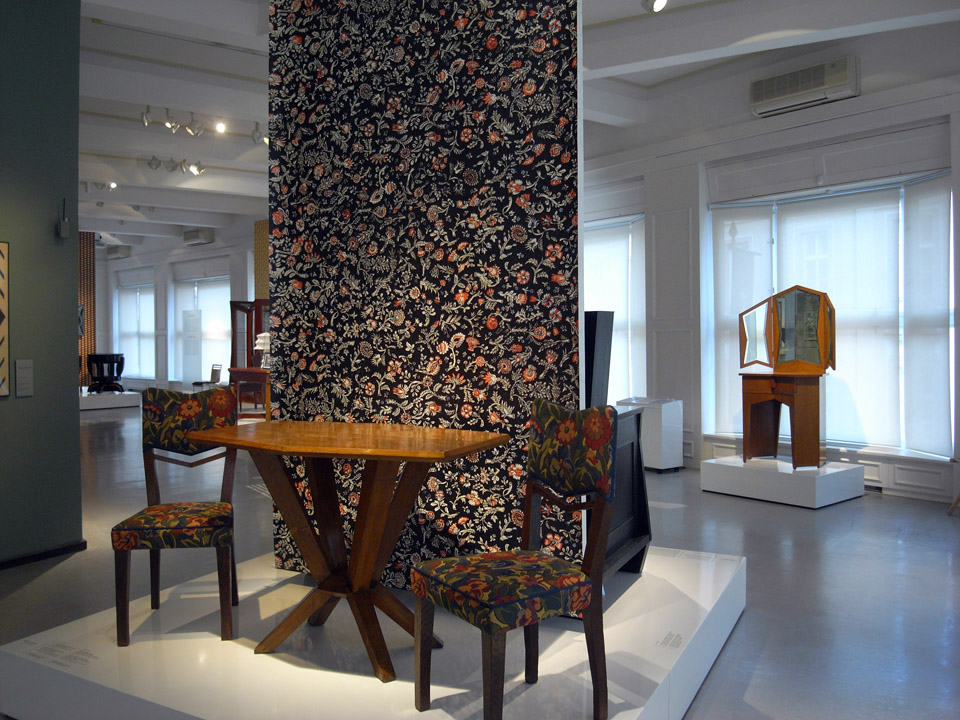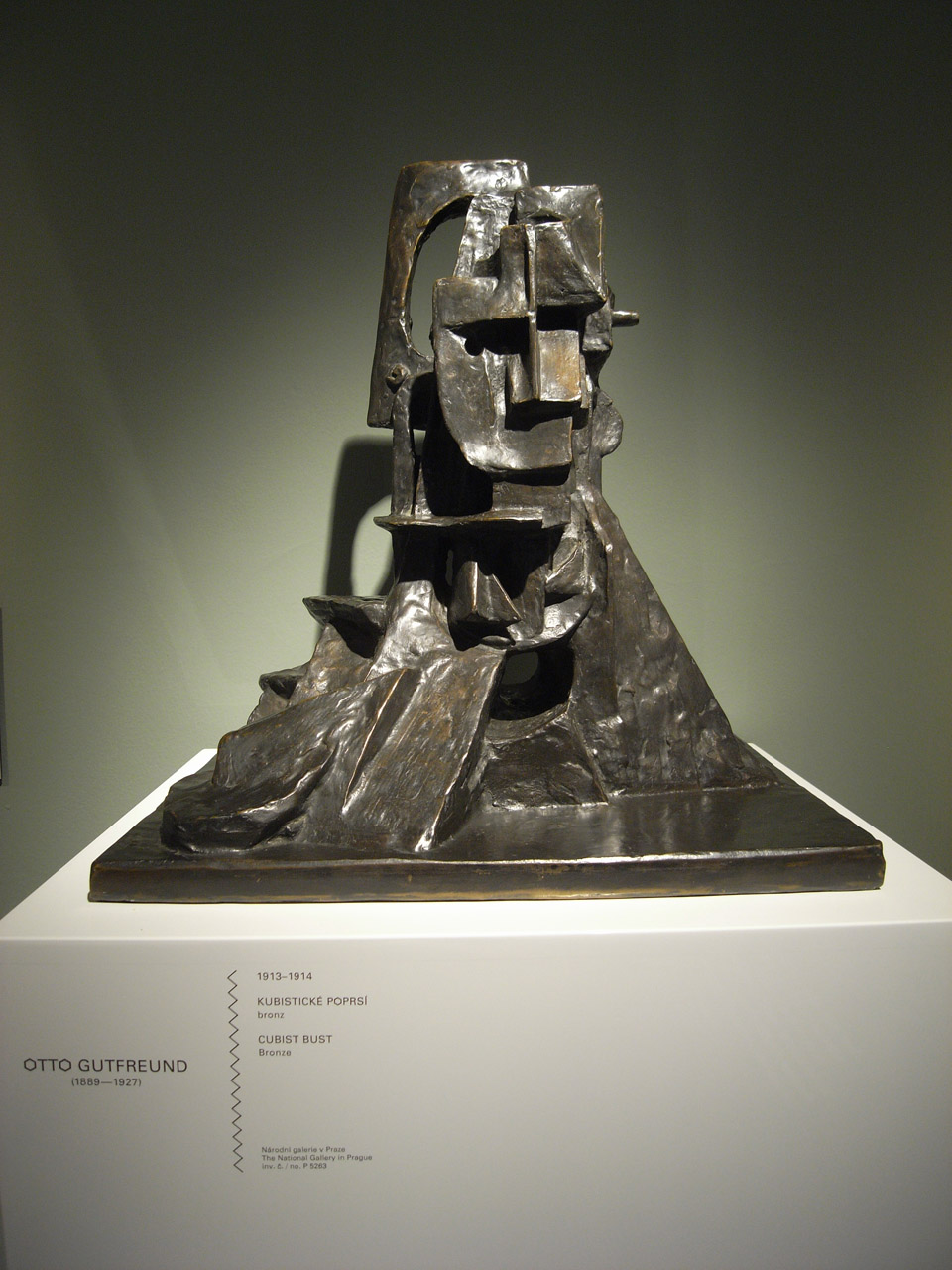Prague, December 3, 2015 – December 31, 2017 http://www.upm.cz
The Czech Cubism exhibition in the House at the Black Madonna has been recently re-opened after more than two years of closure, a good reason to head back and see what has changed.
For those without background – Czech Cubism was a modernist art and craft movement in the pre-war 1910’s Czech part of the Austria-Hungarian Empire, where artists, inspired by their French colleagues (there has been a close connection between French and Czech artists in that historical period) tried not only to follow in their steps, but to extrapolate further and create a very own cubist vocabulary. One of the specific and very much unique features of Czech Cubism was its branching out beyond painting and sculpture into design and architecture: All across Prague, there are numerous examples of cubist architecture, and during the same period unique furniture, porcelain and other utility objects have been created.
Prior to its closure in 2012, the display has been managed by the Czech National Gallery (NG). The new display that has just opened is in turn managed by the Museum of Decorative Arts (upm). These changes are visible in the content of the two floors: The majority of paintings as well as sculptures have disappeared and instead of them, the focus has much more shifted towards furniture and applied art.
Given the uniqueness of the ‘design’ aspect of Czech cubism, I understand why this redirection has taken place, however I still cannot feel but sad for the disappearance of numerous art objects, especially the sculptures-busts from display (hopefully they can be seen at the National Gallery now). In this sense, I found the prior NG exhibit much more balanced. In between the furniture, cups and a slideshow of Prague cubist architecture the remaining sculptures and paintings look more like pieces of furniture themselves than fine art, and I feel this does not give full justice to the breadth of the movement and flattens the overall context.
The exhibition has been prepared with attention to detail like a special typeface with a cubist letter “o” inserted, or the newly designed table and chair in the activity corner. But all of these are more surface design elements and cannot take away a slight feeling of lack of depth.
Without prior knowledge, my main impression would be that of a Czech Cubism brand, something that is to be inspected in the exhibition hall and that can be purchased as a replica in the ground floor museum shop.
Talking about the museum shop, there is one quirky detail to know: There is the official upm museum shop that doubles as the ticket office. Yet right next to it is the Kubista design shop, which has not only nothing to do with the museum, but it even sells the exactly same products with an additional 20% markup. So if you want to buy any cubist cups or teapots, buy it in the museum shop and NOT in the Kubista shop.
Overall, it’s worth a visit if you desire to see original pieces of cubist furniture and table-ware, which are truly unique worldwide, but the comprehensiveness of the exhibition does not do justice to the whole breadth of the movement or its wider context.





